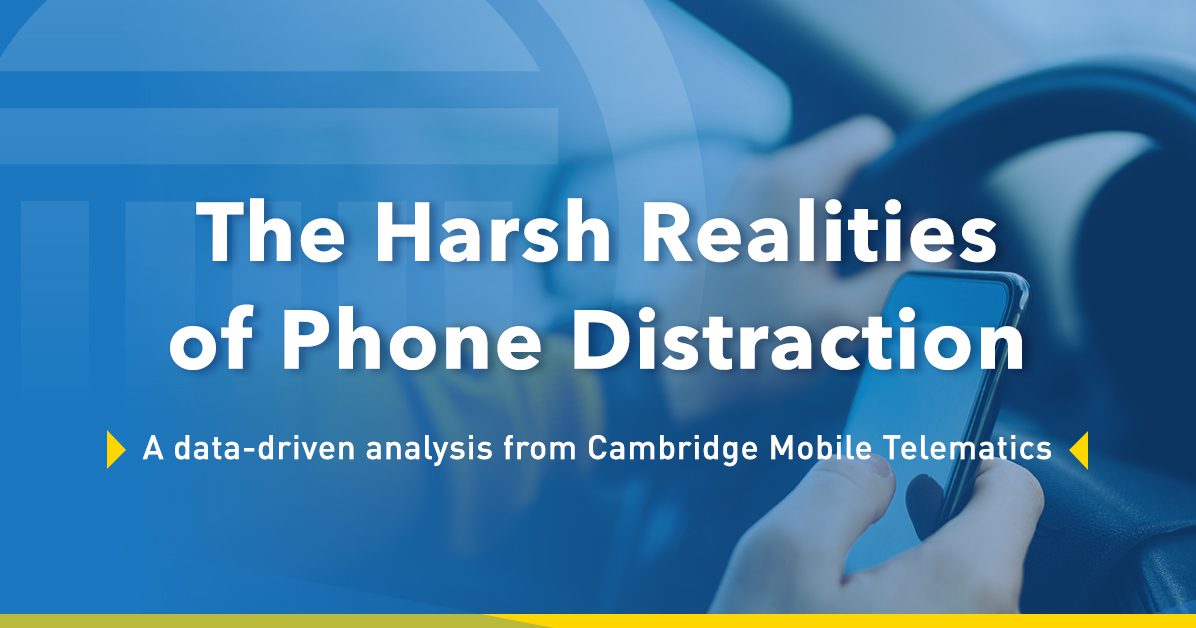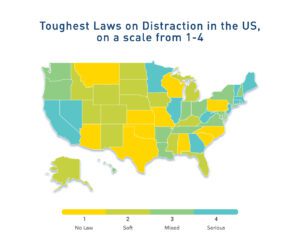Distracted Driving Laws Alone Aren't Enough to Combat Phone-Based Distraction

As of February 2020, 21 states, Washington D.C., Puerto Rico, Guam, and the U.S. Virgin Islands have total handheld phone use bans in effect.
A “total handheld phone use ban” is a law that prohibits all drivers from using mobile phones while driving, and includes primary enforcement, enabling an officer to cite a driver without any other traffic violation. However, no state bans all phone use for all drivers – which means you can use your phone if it’s secured to your dashboard – but 39 states do so for novice drivers, and 20 prohibit bus drivers from using them.

Texting is banned in 48 states, and 45 of those have primary enforcement if you’re caught using your phone behind the wheel.
Phone-based distracted driving is difficult to observe in the moment; it is hard for authorities to enforce the hodgepodge of rules and for lawmakers to grasp the severity and scope of the problem.
This lack of a unified response feeds the larger problem combating phone distraction faces: the greater public has yet to feel the urgency with which this threat needs addressed. Road safety advocates are still searching for the unifying message of an engaged grassroots campaign. Think: Mothers Against Drunk Driving, also known as MADD.
Experts point to successful public awareness campaigns as major contributors in reducing fatalities tied to drunk driving. In the early 1980s, the first phase of combating drunk driving included a public perception campaign that driving while intoxicated wasn’t a mistake but an actual crime, as well as state-by-state advocacy in legislative chambers for stricter – and clearer – laws to address the problem. Building on that success, groups like the Harvard T. Chan School of Public Health built on those successes to create and promote the U.S. Designated Driver campaign.
Together with tough law enforcement, fatalities involving alcohol impairment dropped 30% between 1988 and 1994.
Phone-based distracted driving is still a widely misunderstood slow-moving disaster. Because it’s prevalence is hard to observe, no clear line could be drawn suggesting causation – that is, until smartphone telematics was introduced. CMT is able to measure the scope and severity of the problem: 41% of daytime trips taken in the U.S. involved phone distraction. The next step is to forge public-private partnerships to work with authorities and advocacy groups to educate and incite change.
Read all about the harsh realities of phone-based distraction in our latest report, and learn why telematics is the modern solution to this modern problem. Download the report now.